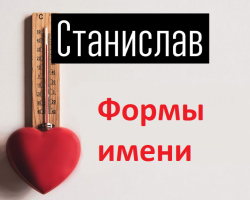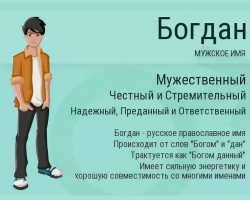Each expectant mother wants to know how childbirth is passing. The article describes all stages.
Content
- Childbirth: how are the stages, signs
- When to go to the hospital before childbirth?
- Video: harbinger of childbirth. How to understand that childbirth is starting?
- Food and drinking during childbirth
- Reception in the maternity hospital: what are they asking?
- Who is present for childbirth?
- The family chamber: what can be done, how to recognize at what stage you are now?
- Childbirth: disclosure 3-5 cm
- Video: Cervical of the uterus. How to accelerate the opening of the cervix during childbirth?
- Childbirth: disclosure 5-7 cm, shower
- Crisis 7 centimeters: How do birth are, what happens to you at this stage?
- Disclosure of the cervix during childbirth by 8-10 cm: what happens to a woman at this stage?
- What happens to the child during childbirth?
- The most important stage is childbirth
- Next period of childbirth: contact of the baby and mother
- Placenta exit during childbirth
- Video: How are the first birth? The main stages of childbirth. What to wait?
- Video: What is impossible during childbirth? Frequent mistakes in childbirth that affect the health of mom and baby
- Video: Real birth from and to - fighting, maternity hospital and meeting with the baby
The term of childbirth that your doctor will prescribe is approximate. Only 5% of babies are born exactly on this day, the rest are born between 38 and 42 weeks pregnancy.
Read on our website another article on the topic: "Home birth: for and against". You will find out whether it is worth giving birth to at home.
From this article you will learn how the birth is going on, what happens to you and the child at each of the stages, how to recognize at what stage you are now, and a lot of other useful information. Read further.
Childbirth: how are the stages, signs

Childbirth rarely begin with a sudden waste of water and strong contractions. How do they go? Usually predicted contractions appear a few days before, they are light, last several hours and pass on their own.
Other signs of the beginning of childbirth include:
- The appearance of a large amount of dense mucus (sometimes slightly pink or brown) - this is mucous plug “clogging” the cervix.
- Persistent and stupid back pain.
- Diarrhea and vomiting (optional) - the body has a natural tendency to cleanse before childbirth.
- Trembling throughout the body.
- The appearance of amniotic fluid - they can ooze or flow out with a strong stream.
- Sometimes the fetal bladder remains intact to the second period of childbirth.
Remember: Each woman has different births. Not all symptoms can appear with you!
If your fights last longer than 30 seconds, tend to grow, and the intervals between them are becoming shorter, there is no more doubt that the birth has begun. You can feel anxiety and excitement alternately. If you feel safe, stay at home and use the moments before the tension that awaits you, take a shower, have a snack, try to sleep or take a walk. Below are the stages of childbirth. Read further.
When to go to the hospital before childbirth?
Many first women do not know when to go to the hospital before childbirth. Here are a few signs when you should not hesitate and you need to seek medical help:
- The greenish amniotic water
- Several hours have passed since the departure of transparent amniotic fluid, and there are no other signs of childbirth
- Intervals between contractions of less than 5 minutes and the contractions are very strong
- If you feel that in the maternity room it will become better and safer for you
During the first period of delivery of the cervix, which was closed during pregnancy, should open 5-10 cm. It often happens that for the first time a woman gives birth about 14 hours, During subsequent births - about 8 hours. But, as mentioned above, everything is individually-someone and for the first time gives birth in 3 hours, and other women and in the second and subsequent times-up to a day.
Read on our website another useful article on the topic: "How not to miss the beginning of childbirth: the first signs of the beginning of childbirth in women". You will find out when, at what period of pregnancy the birth should begin.
Video: harbinger of childbirth. How to understand that childbirth is starting?
Food and drinking during childbirth
In many hospitals, it is forbidden to eat during childbirth, in some hospitals it is forbidden to drink. This ban is explained by the risk of complications if the cesarean section is necessary. Meanwhile, scientific studies confirm that the result of this procedure can be a slower childbirth and an increased risk of cesarean section.
Childbirth is a complex process, and without replenishment, it is difficult. This is as if you had to climb high into the mountains without a supply of water and provisions - your strength and energy will quickly end. But you need to listen to doctors and tolerate a little without food and water, if necessary. Find out in advance what rules in your chosen hospital.
Reception in the maternity hospital: what are they asking?
A lot of formalities await you in the maternity room in the maternity room. Here's what they ask there:
- You will be asked to present a card of pregnancy, the results of the analyzes, the current insurance booklet and identity card.
- The midwife will conduct an interview. She will ask you a lot of detailed questions about your pregnancy, your health and even your last visit to the cosmetologist.
- The midwife will also create your hospital card.
You are also examined to find out at what stage of childbirth you are.
Who is present for childbirth?

Read on our website another article on the topic: "Partner birth with her husband". You will find out what courses and tests need a husband to attend birth.
Naturally, if the maternity hospital you have chosen is allowed so that your second half is present in childbirth, then your husband will support you at all stages. Here is a useful tip:
- When you find yourself in the maternity room and meet the midwife that will care for you, ask her to talk a little.
- Tell her what worries you in childbirth, what you are afraid of.
- You can write everything in advance so as not to forget something important.
- Such a conversation will certainly benefit both parties - you, as far as possible, will see that your needs are satisfied, and the midwife will learn how to help you.
Who else is present in childbirth?
- The midwife will follow you most of your birth. About every 2 hours She will evaluate progress. In case of doubt, he will call the doctor.
- During the birth, the hall can be crowded-in addition to the midwife, there will be: a obstetrician-gynecologist, as well as a neonatal nurse and a non-manner.
- Students of obstetrics and medicine may also be present for educational purposes.
Remember that you have the right to intimate life and confidentiality at any time. You may not agree to the presence of people who are not directly related to your care.
The family chamber: what can be done, how to recognize at what stage you are now?
The maternity ward rarely resembles the house, although sometimes it is very comfortable. In the tribal chamber you will find a maternity hospital. In more modern maternity hospitals and paid births, the chambers resemble space furniture and are controlled using a remote control.
You can give birth, leaning on the edge of the bed, the back of a chair or a wall. Use the beginning of childbirth when the fights are not very strong to get comfortable:
- Turn on the music you brought with you
- Get your favorite blanket and socks
- Ask the midwife to turn off the ceiling lamp
If you give birth in a multi -seater room, ask to close the curtain, doors, remind the staff that you have the right to intimacy.
Now it is worth preparing for the stages of childbirth. Relax and nervous. How to recognize at what stage are you now? Read further.
Childbirth: disclosure 3-5 cm
At the beginning of the birth process, you will feel every 3-10 minutes not very strong fights lasting about 30 seconds. Over time, they will become more intense and frequent. When opening the uterus 3-5 cm:
- Women describe cramps as severe menstrual pains, a feeling of elastic tape, wrapping up stomach, or as a sudden wave of heat.
- You can also feel pressure over the pubic symphysis, pain in the lumbar spine or cramp in the upper thighs.
- The peak of reduction can be painful.
During the fight, concentrate on it, pause in a conversation or lesson that you do. Be active: move, change your pose, breathe freely and slowly between fights, relax.
Video: Cervical of the uterus. How to accelerate the opening of the cervix during childbirth?
Childbirth: disclosure 5-7 cm, shower
The next stage of childbirth began - the opening of the cervix 5-7 cm:
- Fights each 2-5 minutes Duration about 60 seconds. Now they are really dynamic, strong and painful at the peak.
- You may have: dry mouth, nausea, vomiting, diarrhea and increased sweating.
- It is difficult for you to control your breathing, it is difficult to relax in the pauses between the fights.
- You will need support and the presence of a loved one or midwife.
- Try the relaxing effect of water - take a shower.
Most often, at this stage of childbirth, a rupture of the bladder occurs. Vaginal bleeding may occur - when opening the cervix, tiny vessels burst. This is not a reason for concern.
The doctor can conduct CTG - a cardiotocographic study:
- With the help of sensors adjacent to the stomach, the device records uterine contractions and the heart rate of the child.
- The main purpose of the use of CTG is to assess the condition of the fetus.
In most hospitals, the KTG-study is associated with the immobilization of the woman in labor in the lying position on the back for at least a few minutes. But it is worth knowing that constant monitoring of childbirth, especially in the lying on the back, increases the risk of complications.
Crisis 7 centimeters: How do birth are, what happens to you at this stage?

Disclosure of the cervix 7 centimeters - This is the hardest time in childbirth for most women. Therefore, it is often called a crisis. How are the birth, what happens to you at this stage?
- Behind you is a long way, but you are so tired that the prospect of further efforts overwhelms you.
- Strong contractions seem unbearable.
- You are covered by humility, you lose faith in your strength.
- You want to escape, you can also experience a strong anger for a loved one or a midwife.
- You feel how alone, but still need the support and encouragement of others.
The appearance of such sensations most often indicates the imminent completion of this period of childbirth. Adrenaline is released in the body, which slowly prepares you for tremors.
Disclosure of the cervix during childbirth by 8-10 cm: what happens to a woman at this stage?
The next stage of childbirth is the disclosure of the cervix 8-10 cm. What happens to a woman at this stage?
- Fights every 1-3 minutes, continue for a long time, the peak of fights appears immediately.
- You may have severe back pain, hiccups may occur.
- You feel irritation, fatigue, or you are in a trance, focusing only on the sensations of emanating from your body, are indifferent to the outside world.
Soon the child’s head will fall, and you will begin to feel weak contractions.
What happens to the child during childbirth?
So, what a woman feels during childbirth, we figured out. Now you should tell what is happening to the baby.
- The child moves along the generic paths with a screw -shaped movement.
- Since at some point the birth canal already become, the child has to change his position so that his head overcame this obstacle. You can facilitate his task, for example, sitting on the ball.
- The child’s head adapts to the form of birth canal due to the fact that the bones of his skull do not grow together, and there are elastic seams and a fontanel between them.
- Strong abbreviations of the uterus massage the entire body of the child, removing water from the lungs and preparing them for the first breath.
- The hormones distinguished in the baby's body make him adapt to the pressure of contractions.
At this moment, the baby decreases the amount of blood with oxygen in the limbs, concentrating where they are most necessary, that is, in the heart and brain.
The most important stage is childbirth
When a woman is already ready to give birth, she is being taught to the family ward. This birth period can last up to two hours. This is the most important stage. Before giving birth, many women wonder how they will understand that the moment has come, and you need to push.
- When such a moment comes, it is impossible to skip it, you will feel a strong instinctive desire to push.
- You will feel that you are in consciousness again, as if waking up and are ready to act.
- You can feel stretching and burning in the perineum.
- Now find the situation that suits you the most, it is advisable to make it as vertical as possible.
Here are more tips to alleviate the condition:
- When you feel that a new fight is approaching, calmly take a deep breath and exhale through your mouth.
- As the reduction increases, breathe faster and faster until you feel the desire to pursue, which you can no longer resist.
- Hold a little air in the lungs and forcefully press the aperture downward towards the pubic joint. Do this as long as your body tells you to push.
- If you need to somehow get rid of excess energy, shout-it relaxes the crotch tissue.
- When the reduction subsides, start breathing again, first quickly, and then more slowly and slower until you feel that the uterus relaxes.
During the break between the fights, try to relax - do not clench your teeth (open your mouth, move your tongue several times and smile) or hand (pull your fingers several times). Ask someone to do a slight foot massage if they tremble.
During each push, the child’s head moves forward and is slightly pulled back in the break between the fights. As a result, your fabrics are gradually stretched. In the end, you will feel that the child is very low - your crotch is tense, and the vulva opens with each reduction, and you can see the baby's head. Try to touch her. This is an amazing experience and sensations - you probably remember it for a long time.
When the head rises, listen to what the midwife tells you - she will try to direct the pressure so that the head gently overcome the resistance of the perineum. After the head appears, the baby’s shoulders are approaching the narrowing of the birth canal. Your baby needs to turn face to one of your hips. Then one of the shoulders (upper) rests on the pubic symphysis and partially goes outside, and then the lower shoulder unhinderedly slips out. If necessary, the midwife gently helps with the birth of the shoulders. The child has already cleared the path (the newborn has the largest circumference of the head) and after the appearance of the head, the baby is born in a matter of seconds.
Next period of childbirth: contact of the baby and mother

It is important that the child is laid on your tummy immediately after birth. This is the next period of childbirth - the contact of the baby and mother.
- The baby warms up with your warmth, hears your heartbeat and calms down.
- After a while, he can try to suck his chest.
- Through a constantly pulsating umbilical cord, oxygen reaches the baby, so he, for the first time, can slowly draw air into the lungs.
- Your baby does not need to scream after childbirth. When the umbilical cord does not cut too fast, the newborn gently gets used to new conditions.
- When you greet the baby and talk to him, your body distinguishes a large number of hormones. Endorphins make pain and fatigue in almost miraculously disappear (sometimes for this effect you need to wait a few minutes) and are replaced by euphoria and a sense of satisfaction.
- Endorphin, under the influence of the presence of the mother, is also distinguished in the body of the baby.
So, immediately after the birth of a naked newborn, they put on top of the nude breast of the mother. Mom can hug him, and then put him on the chest. If the child is born on time and is in good condition, after the first feeding, a thorough examination of the pediatrician and such actions as bathing, measurement and weighing should be carried out.
The reason for the child’s separation from the mother may be:
- Inspection of the placenta
- Cutting the cut or torn crotch under local anesthesia or any other manipulations of the midwife.
Scientific research confirms the advantages of the first contact of the baby and mother - "Leather to the skin". The baby is faster and better adapts to new conditions, learns to suck effectively, which allows in the future to avoid many problems associated with breastfeeding.
Placenta exit during childbirth
After a few minutes, the uterus begins to contract again. Your body produces more oxytocin than it was necessary during the previous periods of childbirth. This helps the baby’s application to the chest.
It is worth knowing:
- After a dozen contractions, you will again feel the need for straining - this is the output of the placenta and shells, technically known as the postpartum period.
- The midwife will carefully check the integrity of the placenta, since leaving the placenta in the uterus can have serious consequences.
- If the placenta is incomplete, it will be necessary to conduct curettage of the uterine cavity (curettage, purification).
If necessary, then the perineum is sewn. Damaged tissues are anesthetic, so the imposition of the seams should not be painful, and the procedure usually takes no more than 10 minutes.
Now, within 2 hours, the so -called early postpartum period, you and your baby will be under the supervision of midwives in the maternity room. They periodically check how you feel, and how the uterus is reduced. To do this, softly probed the uterus through the abdominal wall to evaluate its hardness, observing the amount of bleeding from the genital tract.
Surely you are now hungry and want to drink-eat something. If you are cold - get dressed, not fresh - take a shower. Now that your child was born, you deserve a vacation.
Video: How are the first birth? The main stages of childbirth. What to wait?
Video: What is impossible during childbirth? Frequent mistakes in childbirth that affect the health of mom and baby
Video: Real birth from and to - fighting, maternity hospital and meeting with the baby
Read on the topic:







